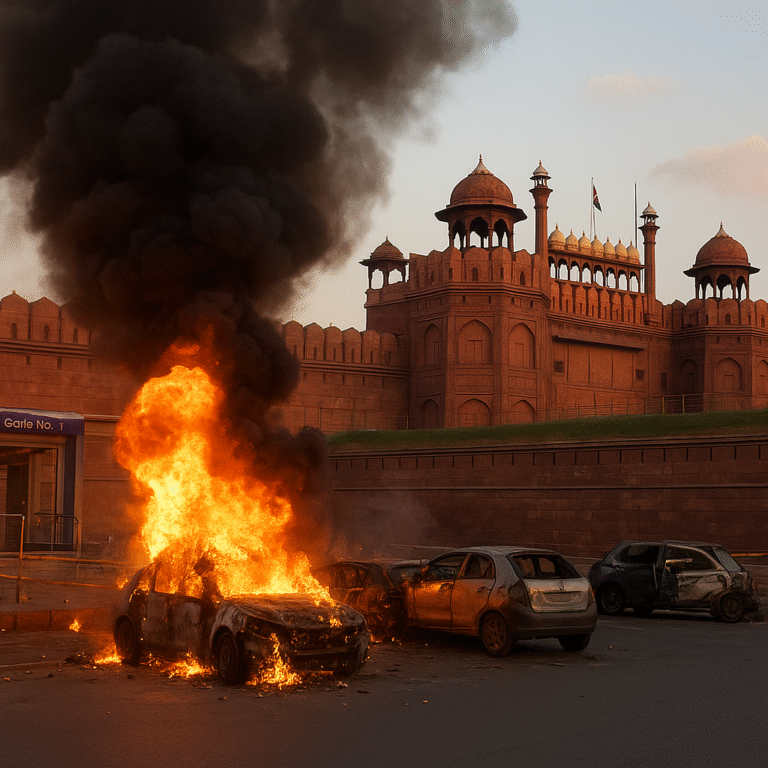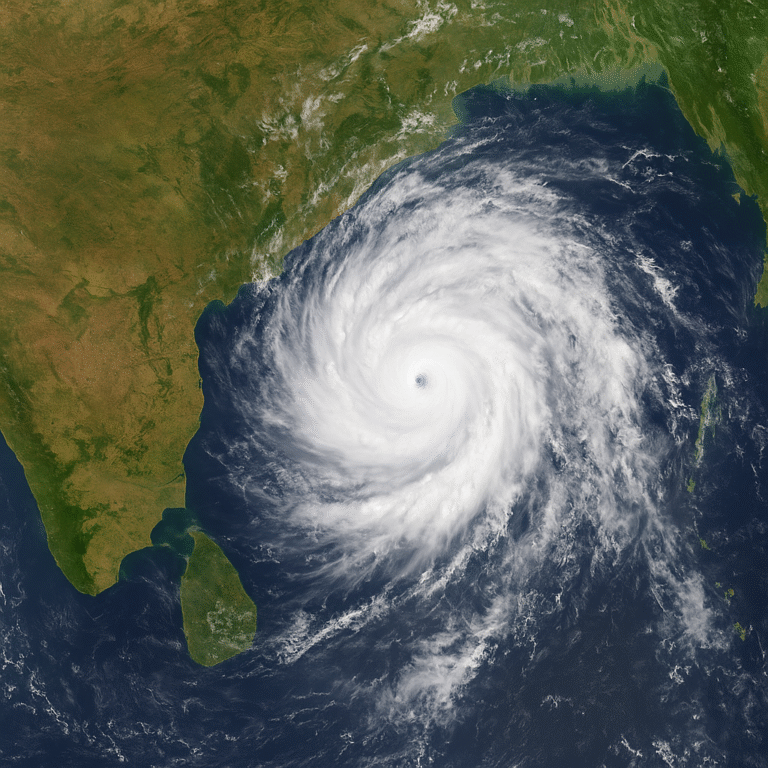
Mumbra, a densely populated suburb in Thane district, known for its vibrant markets and diverse communities, faced a heartbreaking tragedy today. A fatal incident involving a local train near Mumbra station shocked the region and drew attention to long-standing issues with infrastructure, public safety, and the growing demand for systemic reform in Mumbai’s suburban railway network.
This in-depth article presents a comprehensive analysis of the incident, the community’s response, and the larger questions it raises about urban transportation and safety.
1. The Morning That Changed Everything
On Monday morning, around 9:00 AM, during the bustling office rush hour, a suburban train traveling from Kasara to Mumbai met with a tragic fate near Mumbra. Several passengers fell off the train while it was moving at high speed. Eyewitness accounts suggest the train was heavily overcrowded, with many passengers hanging from doors and footboards due to lack of space inside.
Multiple casualties were reported, and others were severely injured. First responders rushed to the scene within minutes, while locals helped carry injured passengers to ambulances. The situation unfolded quickly, leaving commuters, authorities, and onlookers in a state of disbelief and panic.
2. The Victims: Lives Lost in Transit
Among those who fell, several lost their lives instantly due to impact, while others sustained critical injuries and were transported to nearby hospitals. These individuals were not just passengers—they were daily wage earners, office-goers, college students, and breadwinners.
Family members gathered in hospitals and police stations, desperately seeking information. In Mumbra, where communities are closely knit, the loss reverberated deeply. Many expressed frustration and sadness, recalling previous warnings to authorities about overcrowding and the absence of effective crowd-control systems.
3. Overcrowding: A Deadly Pattern
Mumbra lies on the Central Railway route—one of Mumbai’s busiest suburban corridors. Every weekday, thousands board local trains from Mumbra, often fighting for standing space. Overcrowding on footboards, doorways, and gangways has become a normalized part of life for daily commuters.
This incident brings to light the high risks of this routine. Passengers frequently travel with half their body hanging out of the train, and in today’s case, it proved deadly. Despite repeated demands for more services and better infrastructure, solutions remain elusive.
4. Emergency Response: Immediate Measures
Following the incident, emergency services and police cordoned off the affected tracks. Ambulances were dispatched from multiple areas, and hospitals in Thane and Kalwa were placed on high alert.
Railway services on the affected lines were briefly suspended, leading to heavy delays across the network. Authorities acted swiftly to restore services, but questions remained about the systemic gaps that allowed this tragedy to occur.
5. Administrative Reactions
Local authorities and railway officials expressed condolences and promised strict investigation and action. Teams were deployed to examine CCTV footage and collect statements from train operators, platform staff, and passengers. The Ministry of Railways announced that it would initiate a high-level inquiry into the matter.
Additionally, plans were floated to strengthen surveillance systems, introduce crowd sensors, and reevaluate train capacity policies. However, many see this as yet another short-term response in a long line of reactive measures.
6. Mumbra’s Infrastructure Challenges
Mumbra’s railway station, though crucial to daily connectivity, remains outdated in capacity and design. With platforms unable to accommodate longer trains and narrow exits that restrict smooth flow of passengers, crowding becomes worse during rush hours.
The city’s exponential population growth has not been matched with proportionate upgrades to its transport infrastructure. Residents often travel long distances to work, with few alternatives other than the congested suburban network.
7. Rail Safety: Repeated Failures
The tragedy has reignited debate about rail safety in India. Fatal incidents due to overcrowding, footboard travel, and door-related accidents are unfortunately common. The underlying causes—insufficient trains, poor scheduling, and outdated carriages—remain unaddressed at scale.
Although several safety campaigns have been launched in the past, implementation often falls short. Railway Protection Force (RPF) personnel are too few to manage daily crowds, and coaches still lack automatic doors, warning systems, or anti-fall safety mechanisms.
8. The Human Cost
Beyond numbers and statistics lie the human stories—of mothers who lost sons, children awaiting parents who will never return, and friends left grieving. The sudden loss has left entire families devastated.
In Mumbra’s tight-knit neighborhoods, community members organized prayer vigils, meal drives for affected families, and crowdfunding efforts for medical expenses. Civic groups demanded the creation of a dedicated safety audit cell for Mumbra’s rail corridors.
9. Long-Term Demands from the Community
Residents, advocacy groups, and local leaders issued a consolidated list of demands, including:
-
Addition of more coaches on Mumbra-bound trains during peak hours
-
Deployment of crowd-control personnel at major platforms
-
Upgradation of station infrastructure, including elevated walkways and digital signage
-
Launch of a city-wide campaign to discourage footboard travel
-
Installation of emergency rail-side barriers
They argue that this tragedy must not be brushed aside or drowned in bureaucratic delay.
10. Transportation Policy and Urban Planning
Urban mobility experts have long warned about Mumbai’s dependence on its suburban network. Despite the rollout of Metro lines and buses, last-mile connectivity remains a bottleneck.
City planners advocate for a multimodal transit strategy—integrating rail, metro, buses, and water transport. However, this vision requires years of planning, funding, and execution. Meanwhile, daily commuters like those in Mumbra continue to risk their lives just to get to work.
11. Weather and Rush Hour Effects
Although Monday morning was clear and sunny, the impact of the prior weekend’s heavy rains caused delays across train schedules. Passengers who could not travel on Sunday due to track maintenance and waterlogging were forced to travel Monday, increasing load on trains.
Rush-hour footfall reached above normal levels, and many tried to board already packed coaches, exacerbating the risk.
12. Local Government’s Role
Thane district authorities have extended medical aid and compensation packages to the victims’ families. Meetings are being held between railway officials, municipal representatives, and civic stakeholders to discuss long-term collaboration.
The local government is also considering funding for emergency response upgrades, including ambulance stations near suburban lines and trauma centers at key railway hubs.
13. Calls for Accountability
Activists have filed petitions demanding accountability from railway boards and transport departments. Questions have been raised on why crowd-control norms were not enforced and why certain safety features were delayed in rollout.
Families of the victims have called for a judicial probe to ensure transparency and fairness in the investigation.
14. Commuters Speak Out
Daily passengers shared their frustration with the system:
“Every day feels like a gamble. We hold our breath till we reach safely,” said a 32-year-old commuter who travels from Mumbra to CST.
“They keep promising cameras and guards, but nothing changes. Only after someone dies does the news come out,” lamented a college student who lost a friend in the accident.
Their voices reflect a deeper truth—of a system that is overstretched, underfunded, and increasingly unsafe.
15. Hope Amidst Grief
Despite the pain, stories of compassion emerged. Locals used auto rickshaws to transport the injured when ambulances were stuck. Strangers helped carry victims, donate blood, and console grieving families.
Volunteers from NGOs, religious groups, and youth clubs offered water, food, and temporary lodging. It’s this community spirit that gives Mumbra its heart—and perhaps, its best hope for change.
16. Technology and the Future of Safe Transit
Experts suggest using AI-based systems to monitor crowd density, smart ticketing for pre-booked boarding, and AI-controlled gates to regulate entry during peak times. These futuristic solutions are technically feasible but require political will and funding.
Modernization of India’s railways cannot be limited to flagship routes. Smaller yet busy stations like Mumbra must be part of the upgrade roadmap.
17. Conclusion: A City at a Crossroads
The Mumbra train tragedy is not just a local incident—it’s a symptom of a much larger challenge facing India’s urban centers. As cities grow, infrastructure must keep pace. As ridership increases, safety protocols must strengthen. And as we mourn the loss of life, we must ask: How many more must fall before action is taken?
Let this be the tragedy that turned into transformation—not just for Mumbra, but for millions who step into local trains every day, hoping to return home safely.



